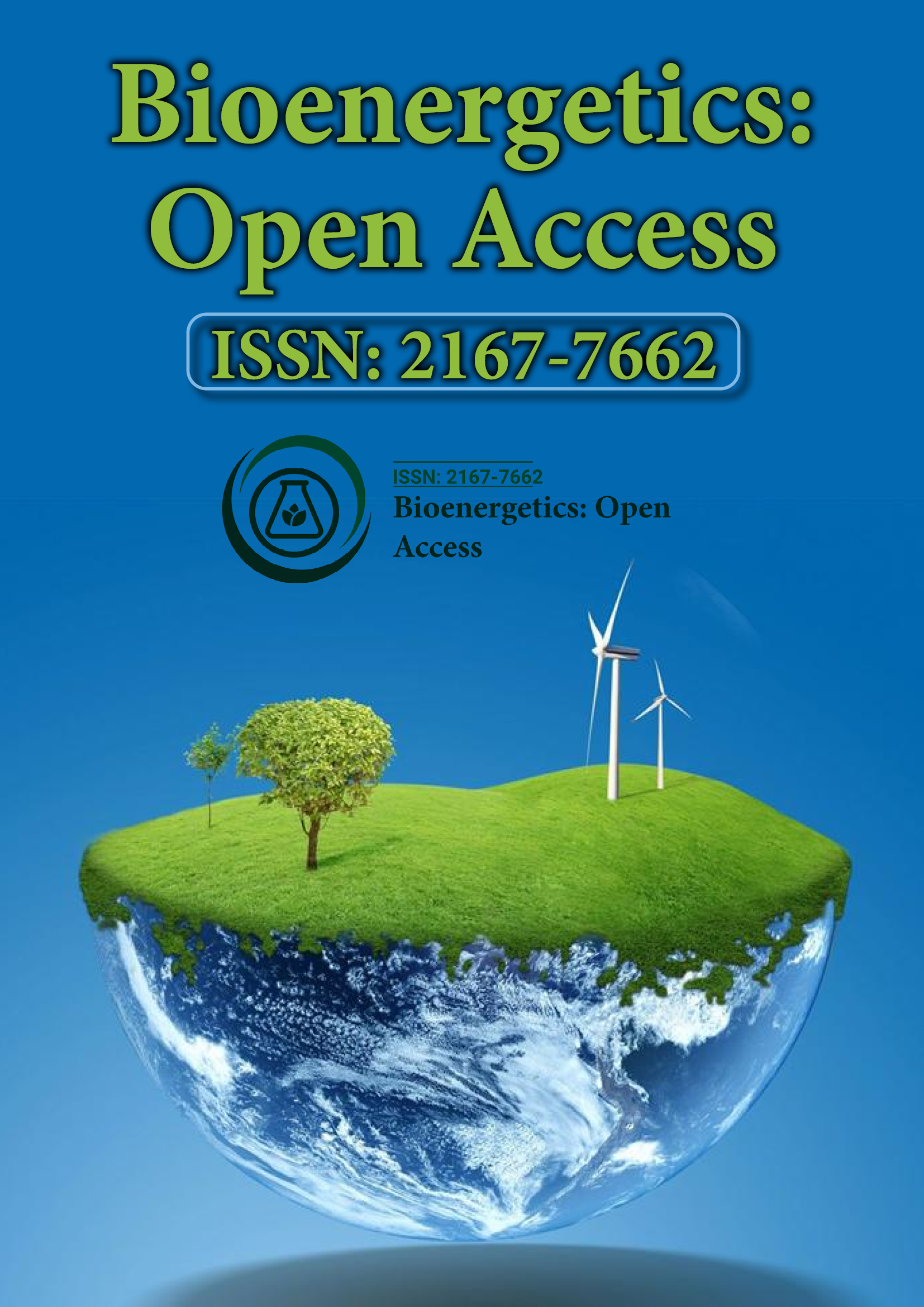Indexed In
- Open J Gate
- Genamics JournalSeek
- Academic Keys
- ResearchBible
- RefSeek
- Directory of Research Journal Indexing (DRJI)
- Hamdard University
- EBSCO A-Z
- OCLC- WorldCat
- Scholarsteer
- Publons
- Euro Pub
- Google Scholar
Useful Links
Share This Page
Journal Flyer

Open Access Journals
- Agri and Aquaculture
- Biochemistry
- Bioinformatics & Systems Biology
- Business & Management
- Chemistry
- Clinical Sciences
- Engineering
- Food & Nutrition
- General Science
- Genetics & Molecular Biology
- Immunology & Microbiology
- Medical Sciences
- Neuroscience & Psychology
- Nursing & Health Care
- Pharmaceutical Sciences
Opinion Article - (2025) Volume 13, Issue 1
Advancing Growth Prediction: The Role of Bioenergetics Models in Fisheries Science
Ethan Zhao*Received: 19-Feb-2025, Manuscript No. BEG-25-28875 ; Editor assigned: 21-Feb-2025, Pre QC No. BEG-25-28875 (PQ); Reviewed: 07-Mar-2025, QC No. BEG-25-28875 ; Revised: 14-Mar-2025, Manuscript No. BEG-25-28875 (R); Published: 21-Mar-2025, DOI: 10.35248/2167-7662.25.13.292
Description
The early life stages of marine fish are critical method that determines individual survival, population dynamics and long-term species viability. Understanding growth during these stages is central to fisheries ecology, especially in the context of changing oceanic conditions and anthropogenic stressors. The development and application of bioenergetics growth models provide a mechanistic framework to quantify and predict how young fish allocate energy among vital processes such as metabolism, growth and activity. A strong bioenergetics model customized for multiple early life stages ranging from yolk-sac larvae to post-flexion juveniles has the potential to significantly advance our predictive capabilities in marine science. Such models not only inform ecological and physiological research but also serve applied purposes in stock assessment, habitat suitability evaluation and climate impact forecasting.
In my view, integrating stage-specific physiological traits into a unified growth model represents a breakthrough in fish ecology. Traditional bioenergetics models, while powerful, often simplify early development or apply a complete framework derived from juvenile or adult stages. However, early life stages undergo rapid ontogenetic changes, including shifts in morphology, feeding behavior, metabolic scaling and environmental sensitivity. Therefore, a model that adapts energy acquisition and expenditure dynamics across multiple developmental stages can provide a much more accurate reflection of real-world growth trajectories. This is especially important for ecologically important species such as anchovy, herring, or cod, whose recruitment success hinges on survival through early stages in highly variable marine environments.
The application of such a model requires robust empirical data, including temperature- and size-dependent metabolic rates, assimilation efficiencies, prey quality and availability and behaviorally mediated energy expenditures. One of the strengths of a well-constructed multi-stage model is its ability to isolate the relative contributions of these factors. For example, it can test how a reduction in zooplankton abundance affects larval growth under warming scenarios or how turbulence alters energetic costs of foraging. Moreover, it can help clarify whether observed growth variability in field studies stems primarily from food limitation, thermal mismatch, or genetic differences in growth capacity.
In recent applications, these models have demonstrated their utility in simulating realistic growth under varying environmental conditions and for projecting outcomes under climate change scenarios. They can reveal stage-specific bottlenecks — points at which growth slows or mortality increases disproportionately — and identify approach beyond which recruitment may fail. This is particularly relevant as ocean temperatures and productivity regimes continue to shift. Furthermore, bioenergetics modeling can assist in evaluating the effectiveness of marine protected areas by estimating whether current nursery habitats meet the energetic demands of early life stages throughout seasonal cycles.
It is also my belief that these models should be increasingly coupled with high-resolution environmental data and individual-based modeling frameworks. Doing so would allow researchers to simulate large populations of larvae or juveniles under dynamic oceanographic conditions. Such integration enhances the spatial and temporal resolution of predictions and provides managers with tools to identify critical habitat patches and vulnerable life stages. Additionally, linking bioenergetics growth models to genomic or transcriptomic data could clarify physiological plasticity and adaptive potential in different populations or species, further informing conservation priorities.
Despite these advancements, several challenges remain. Parameterizing bioenergetics models across multiple life stages requires labor-intensive experimental data, which may not be available for many species. Moreover, scaling up laboratory-based metabolic estimates to field conditions must account for environmental variability and behavioral complexity. Feeding rates and prey field dynamics in nature are far more heterogeneous than what controlled settings can replicate. Therefore, the utility of these models lies in their careful validation against field data and their transparent handling of uncertainty. As such, collaborative efforts across disciplines — physiology, oceanography, modeling and fisheries biology — are essential for refining and applying these models effectively.
In conclusion, the development and application of a bioenergetics growth model tailored to multiple early life stages of marine fish represent a necessary evolution in fisheries science. Such models enhance our understanding of growth processes under natural and changing conditions and provide a valuable framework for predicting species responses to environmental stressors. To maximize their impact, future work must focus on parameter refinement, incorporation of behavioral and ecological complexity and alignment with broader ecosystem-based management goals. Only by embracing this mechanistic, life stage-specific approach can we hope to improve our stewardship of marine resources in an era of rapid environmental change.
Citation: Zhao E (2025). Advancing Growth Prediction: The Role of Bioenergetics Models in Fisheries Science. J Bio Energetics. 13:292.
Copyright: © 2025 Zhao E. This is an open access article distributed under the terms of the Creative Commons Attribution License, which permits unrestricted use, distribution, and reproduction in any medium, provided the original author and source are credited.
